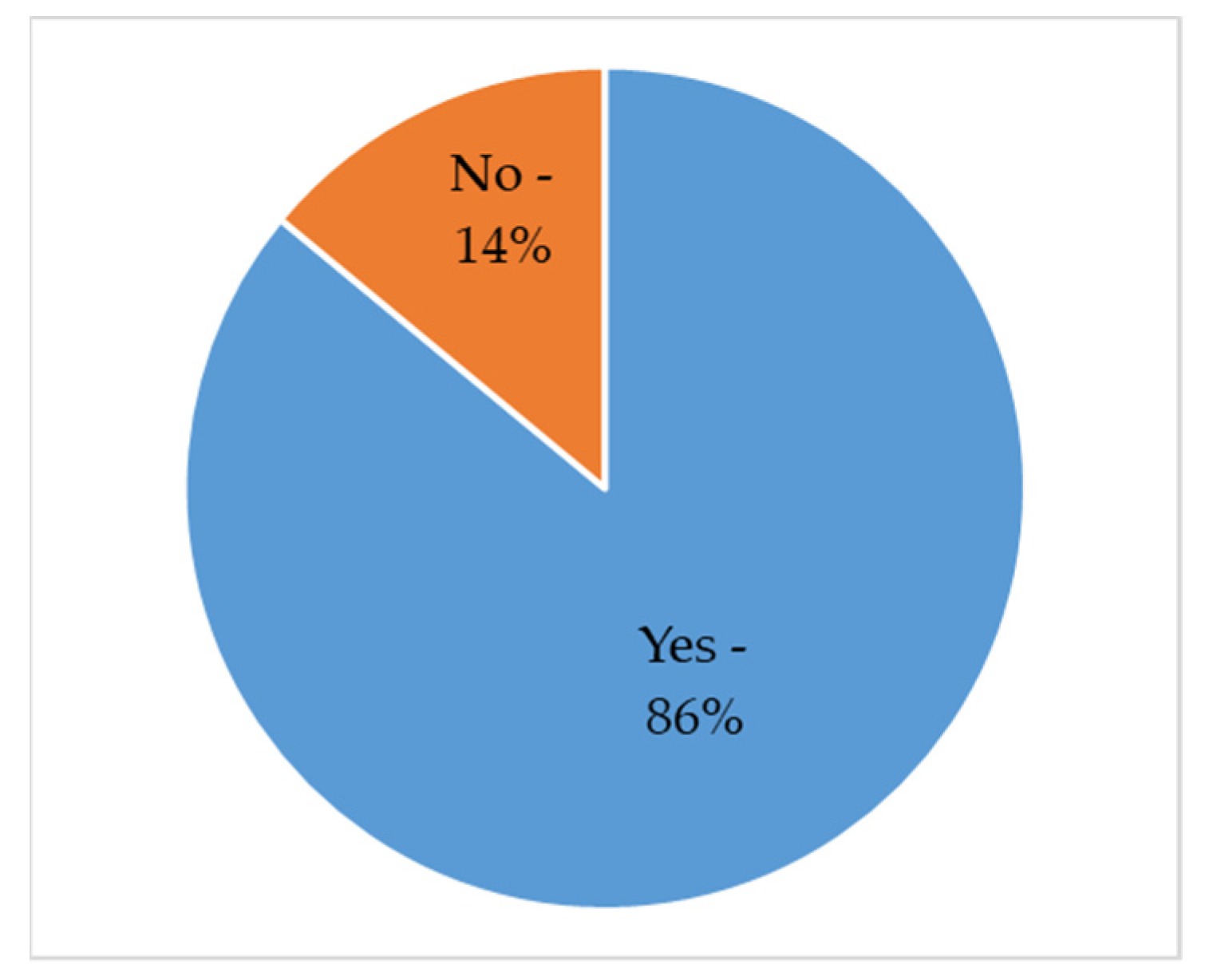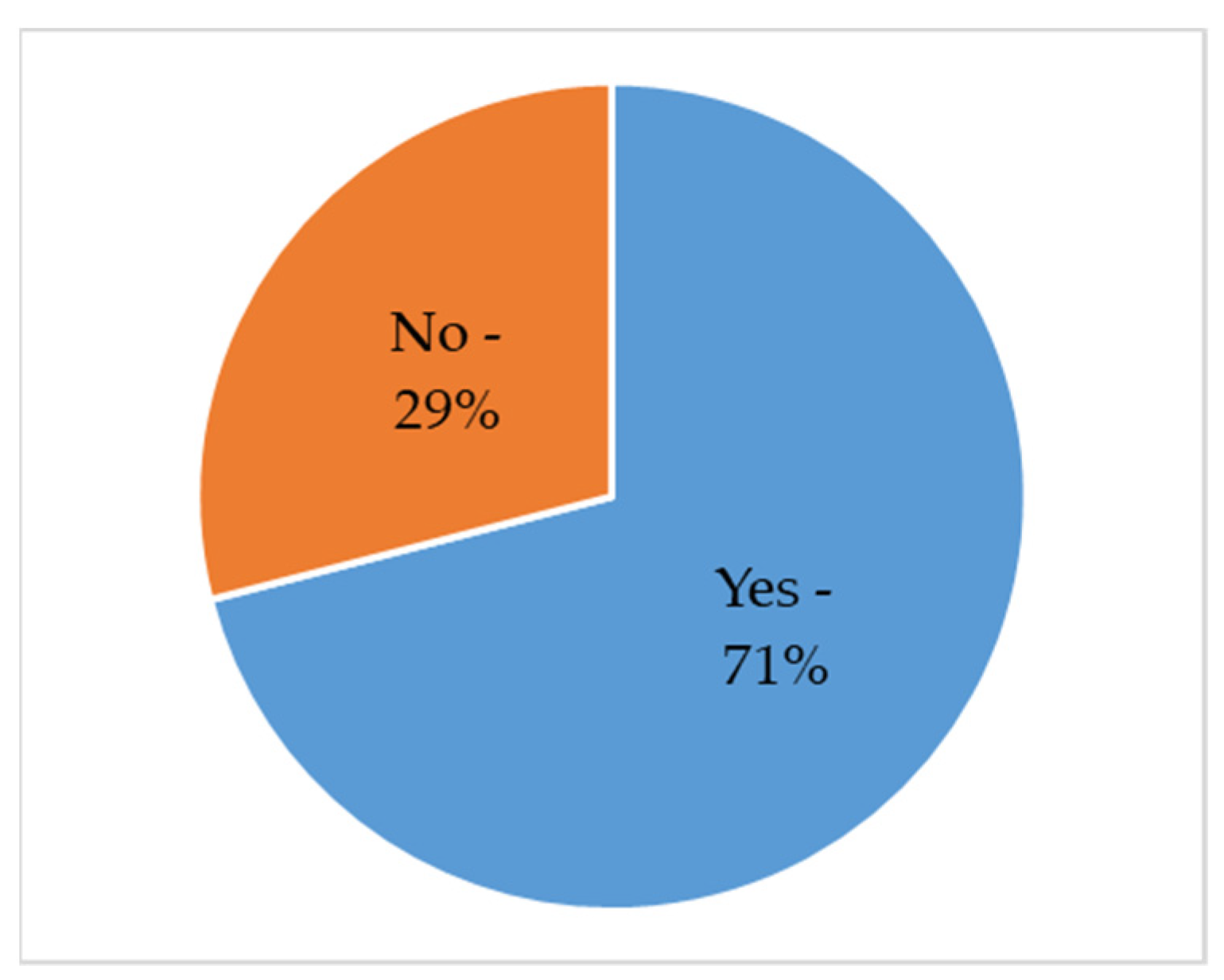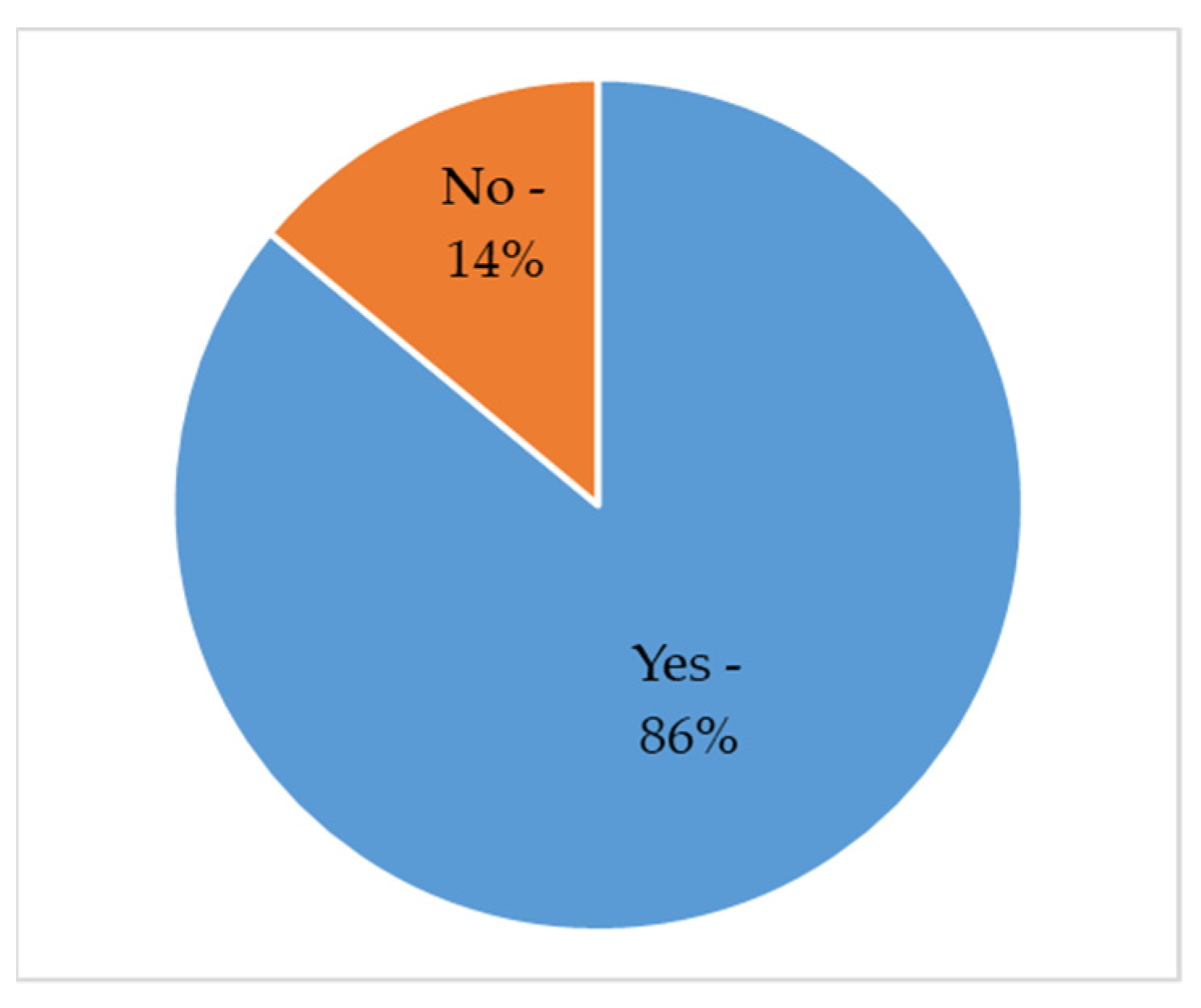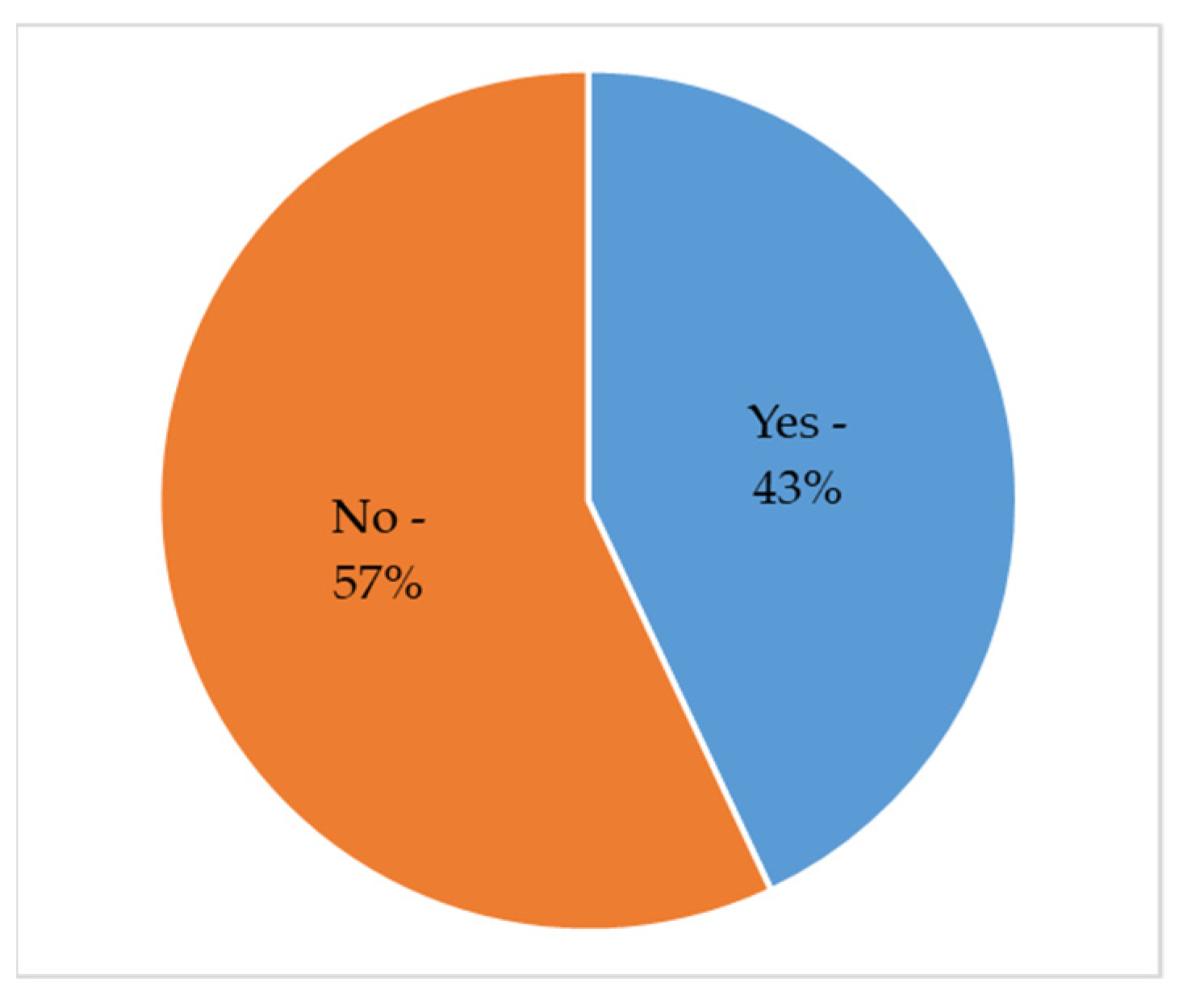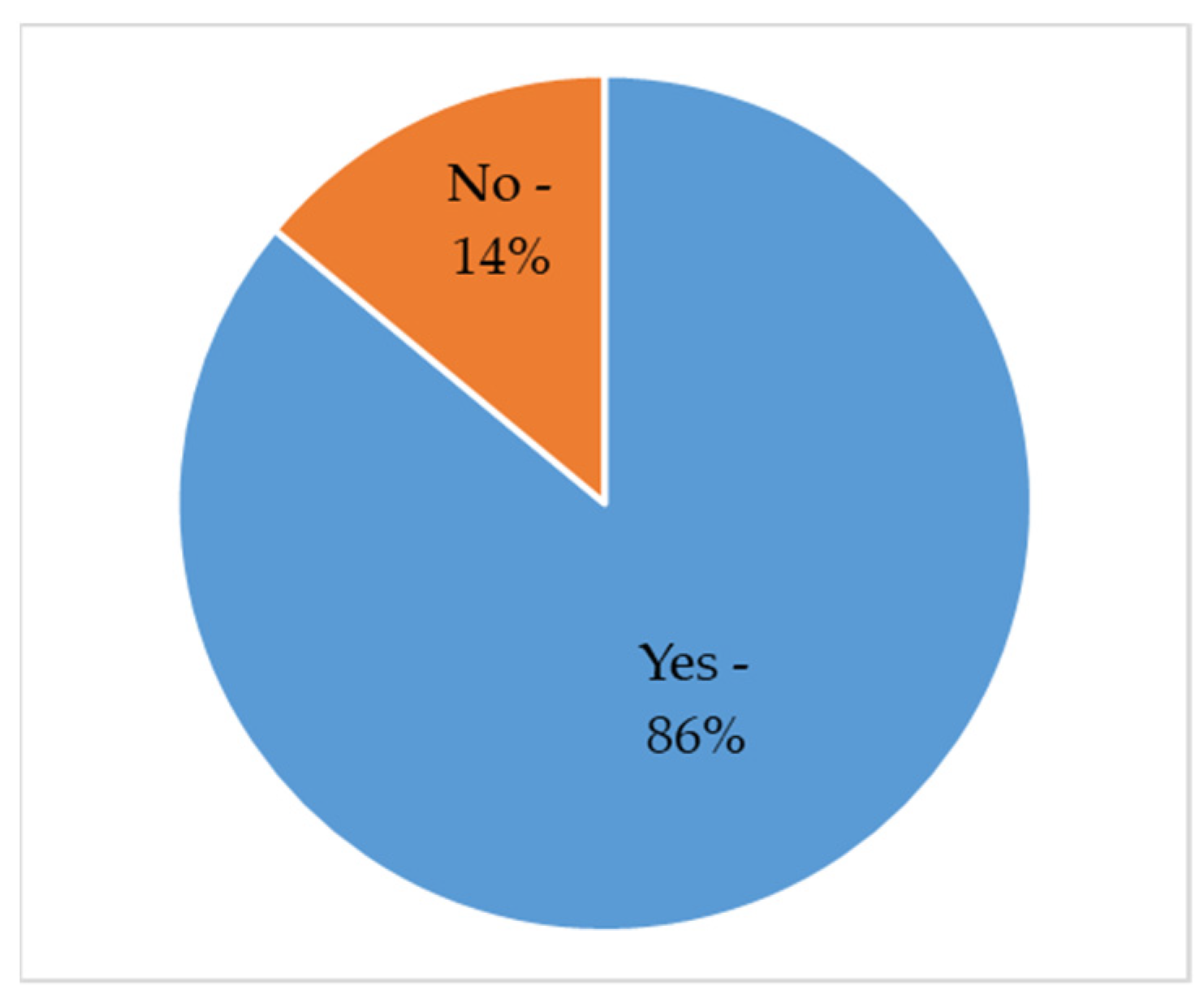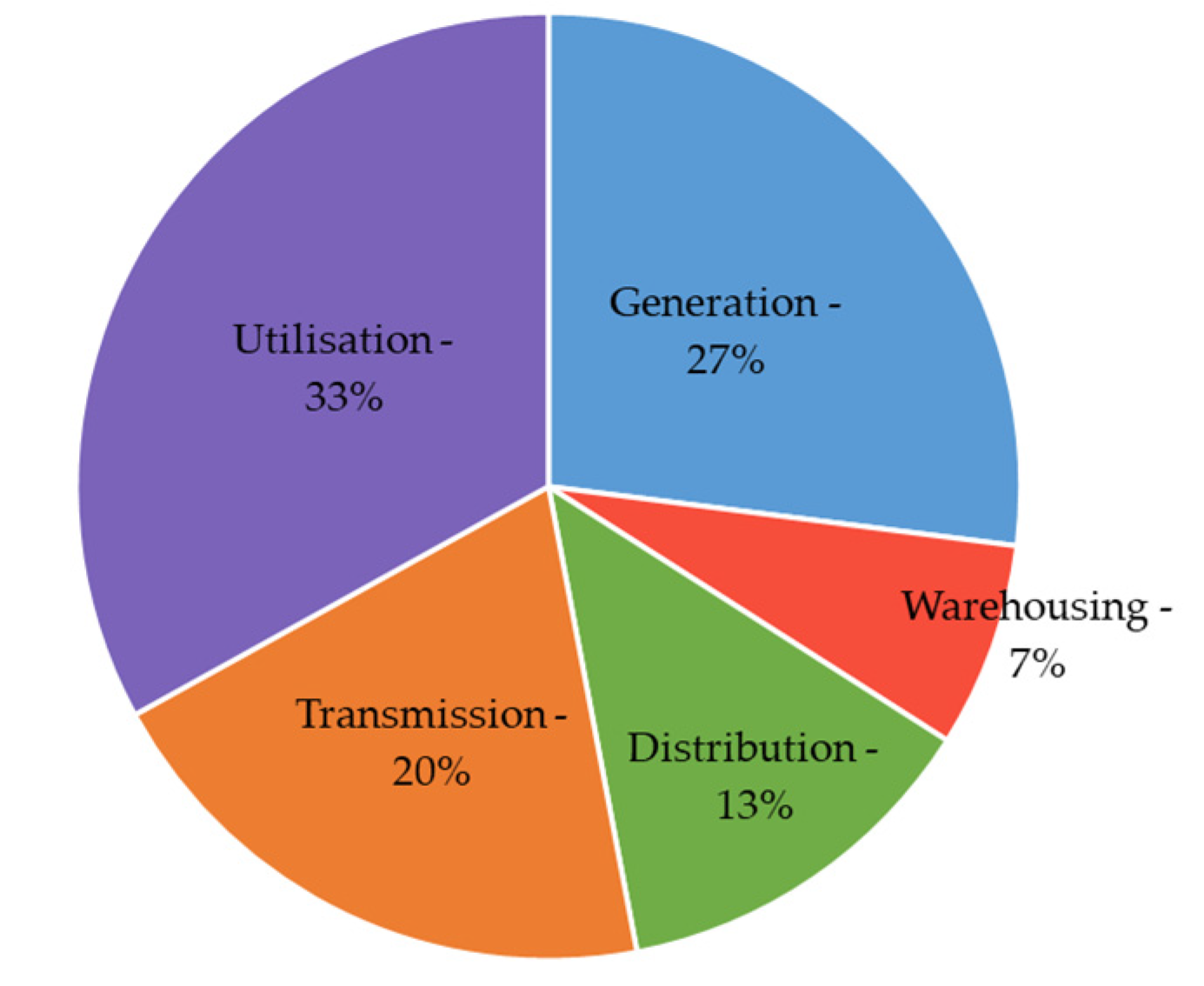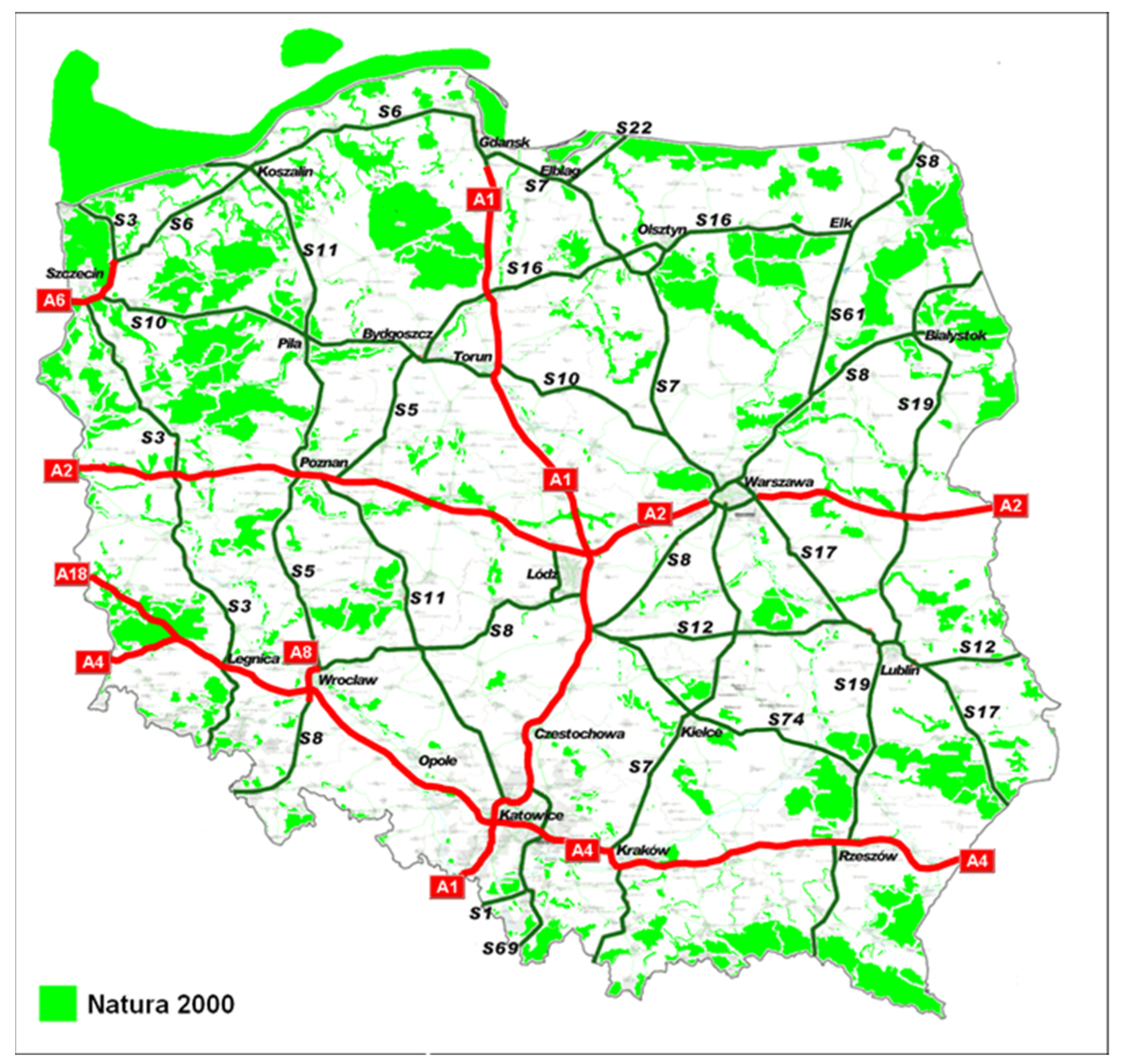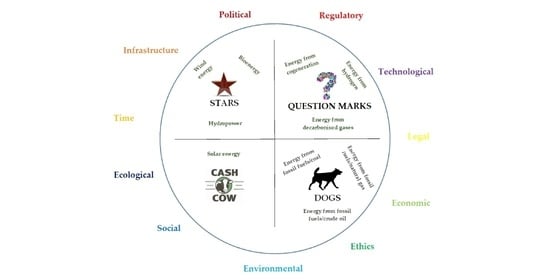The undertaken research identified prerequisites and considerations for the transformation of the energy portfolio of the Eastern Poland macroregion. It was conducted through an institutional legal analysis and identification of the region’s potential energy portfolio, projecting its change over time.
3.2. Potential Energy Portfolio for the Eastern Poland MacroRegion—Results of Institutional and Legal Analysis
The research analysed provisions in strategic documents of the regions/provinces constituting the Eastern Poland macroregion within the scope of activities planned by them in the energy sector. Reflecting the challenges presented in the Commission’s Communication, the European Green Deal addresses the energy sources used to date, the pathways for their transformation, to provide clean, affordable and secure energy and measures to save energy and resources [
55]. Among the documents analysed were: provincial development strategies, regional innovation strategies, territorial (provincial/regional) contracts covering the years 2014–2020, as well as the years 2021–2027, in relation to the duration of the next financial period of the European Union.
The interpretation of documents influencing the development of the energy sector in the Eastern Poland macroregion takes into account perspectives of the European Union institutions conditional on inter alia documents derived from the European Green Deal policy, including the “Fit for 55” package, determining for example the prices of CO
2 emission allowances, or carbon tax in the carbon border adjustment mechanism—CBAM [
56]. At the national level, the region’s energy development activities will be influenced by documents such as: the Farm-to-Fork Strategy, the Roadmap for a Closed Cycle Economy, the Hydrogen Strategy, the Smart Cross-Sectoral Integration Strategy, the Climate Pact or the Just Transition Fund [
57], and the National Recovery and Resilience Plan (KPO) [
58]. Furthermore, the strategic documents of individual provinces of the Eastern Poland macroregion take into account specific characteristics of the given region, including: geographical location, climatic conditions, current energy infrastructure, investment opportunities in the region and social conditions.
The legal and institutional analysis shows that the energy portfolio of the macroregion of Eastern Poland in 2030 can be diversified and balanced; this is a result of the different potentials of the analysed provinces. The potential portfolio can be considered as valid for the energy transition phase. The conclusions of the analysis do not indicate that this is a declining portfolio. An analysis of the documents relating to energy obtained from fossil fuels shows a declaration of sustained use, which places them in the cash cow field. Poland’s declared increase in the use of energy from blue fuel up to 2030 will be almost fivefold (from 14 TWh to 54 TWh) [
59]. This entails the development of gas-fired power plants, which will primarily affect the energy potential of the Podkarpackie province. With regard to energy from renewable sources, this is a young portfolio, and the energy sources can be placed in the stars field, as the growth dynamics of energy production from renewable sources can be strong.
As a result of the conducted questionnaire-based research, it was found that the respondents are divided on the subject of amending strategic provincial development documents aimed at implementing the European Green Deal. Nevertheless, despite this declaration, in a further response, respondents stressed that the European Green Deal policy influences the actions of the territorial unit they represent. All surveyed representatives have declared changes in the energy policy of the provinces directed towards their greater energy independence.
The projected portfolio of energy sources for the Eastern Poland macroregion for 2030 was prepared based on the analysis of the provisions in the strategic documents of individual regions,
Table 1 [
60,
61,
62,
63,
64,
65,
66,
67].
With regard to the regions of Eastern Poland, the analysis covered the provisions of the voivodship development strategy, regional smart specializations and territorial contracts in the field of energy development, in particular in the pro-ecological direction. When preparing a synthetic summary of the forecast portfolio of energy sources, the results of the SWOT analysis included in the documents of individual regions were used.
The development strategy for the Warmińsko-Mazurskie province emphasises the importance of securing energy conditions for the achievement of strategic goals [
60]. The province is a national leader in terms of the share of energy produced from RES in the total energy production. However, the high value of this indicator is a consequence of the low level of its own energy production. The province is dependent on external energy production, with only a small amount of hydroelectric power being generated within its borders. The strategy emphasises that the development of the province is conditional on investment in gas and electricity distribution networks and the use of renewable energy sources, ultimately aiming for the region to become as self-sufficient in energy as possible [
61].
SWOT analysis of the strategy identified shortcomings in the energy infrastructure in terms of distribution network and transformer/distribution substations and high energy prices (weaknesses). Opportunities in the energy area highlighted the government’s implementation of planned investments in power and gas infrastructure. Weaknesses identified in the list of threats were in the system of government development instruments, in particular the lack of opportunities for the development of the prosumer energy sector.
Among the measures which are to support the achievement of the planned objectives, the following are forecast: the modernisation and construction of a gas distribution/transmission network, the creation of IT systems to support network management and operation; modernisation to optimise network parameters; the improvement of energy efficiency in the region; developing infrastructure for electromobility; the creation of low-emission heat sources based on RES, the creation of low-emission efficient heat and energy sources (co-generation); creation of efficient heat networks and nodes and modernisation of inefficient ones; automation of the heating process; the construction of modern installations based on RES energy, including geothermal energy (ibidem, 61). The territorial contract provides for projects in the field of energy efficiency improvement, energy grid development and thermomodernisation of public buildings [
62].
In the development strategy for the Podlaskie province, two energy-related strategic objectives have been identified: competitive economy and quality of life. The vision of the province defined in the strategy emphasises that it is to be green, open, enterprising and accessible. The activities undertaken in the province are to be targeted at renewable energy sources, the production of equipment for energy generation from RES, and ecological and energy-efficient construction. In terms of energy production, the province has identified production opportunities from biogas, including: waste management, animal and food production (mainly dairy); wind energy (especially in the northern part of the region); and solar energy [
63]. The strategy emphasises that the RES development underpins both the region’s energy security and climate protection. Consequently, a decentralised model of energy production, located in rural areas and based on RES, has been adopted in the province, which corresponds to the economic structure of the region, dominated by agriculture and agri-food processing, which also provides by-products requiring appropriate management [
63]. In the SWOT analysis of the strategy, the strengths of the province include good possibilities for the production of heat and electricity from biogas and relatively good conditions for the development of wind and solar energy. The lack of energy security in the province (dependence on electricity imports, the province registers the lowest values in the country for energy production), a weak and outdated power grid and the insufficient capacity of the gas grid were identified as weaknesses [
62,
63]. Opportunities highlighted were energy investments in the 400 kV electricity and gas distribution and transmission networks, as well as important legislative changes in the energy and waste management sectors. Conversely, the disadvantageous location of wind power plants was identified as a threat to the region’s nature conservation in terms of the Natura 2000 programme. Among the activities undertaken in the province, the following are highlighted: projects reducing the levels of both energy and material consumption and those based on renewable sources of energy (in which the province records above average results) and combined heat and power technologies (co-generation). In the next development strategy adopted by the province, one of the strategic objectives is a dynamic economy, for which the more detailed, in the context of energy, operational objective is energy revolution and a closed-loop economy [
64]. Among the activities envisaged in the province under these objectives are the development of circular economy technologies and energy production from renewable sources, as well as the continuation of activities defined in the previous period. To increase the energy security of the province, the territorial contract provides funding for projects aimed at modernising electricity distribution and transmission systems [
65].
The need for effective use of the region’s resources, including energy resources and natural conditions for agriculture, and striving to improve energy efficiency were highlighted among the development challenges presented in the strategic documents of the Lubelskie province. In order to increase energy efficiency, investments are needed to modernise, reducing the failure rate of systems, as well as the losses in energy transmission and, in addition, investments enabling the integration of different energy sources, including renewable energy sources. Among the planned activities, the local authorities have foreseen the following: the modernisation and development of local energy networks; the expansion and modernisation of the dispersed energy system; the rationalisation of the exploitation of mineral resources; the construction of technical infrastructure, the preparation of investment areas in the mining and energy sectors, as well as the construction of facilities and equipment for the transmission of energy to the national energy system from the planned conventional power plants and from dispersed sources (RES), the reclamation of former mining areas and the mitigation of the negative effects of mineral deposit exploitation [
66]. The Lubelskie Province Development Strategy to 2030 maintains the existing lines of activity related to the pursuit of increased energy efficiency and increasing the use of energy from renewable sources [
67]. It also stressed the need to implement measures to develop the energy generation, distribution and storage system and the monitoring of its transmission. In addition, the development of low- and zero-emission generation capacity and distributed energy generation based on prosumers, sustainable waste management, recycling and recovery of raw materials and energy have been identified as important policy directions. The area of the province, in particular Polesie Lubelskie and the Bug River basin, was indicated as having excellent potential for the exploitation of solar energy. At the same time, the development of new RES-based generation capacity is planned by using mining brownfield sites, as exemplified by the state of North Rhine–Westphalia [
68]. In the Lublin Province Development Strategy to 2030, special attention was paid to hard coal resources available in the Lubelskie Coal Basin which constitute 18.1% of national resources. Currently, coal is exploited from the Bogdanka deposit, while another two deposits are being prepared for exploitation (area K-3; Ostrów). The strategy emphasises the search for new solutions for hard coal as a raw material for on-site energy production. Lubelskie Province’s share of energy produced in the country in 2019 was only 1.5% (ranked 14th in the country). Energy generation was dominated by thermal power plants (62.7%), industrial power plants (36.9%) and renewable energy sources (22.9%). A total of 20% of the province’s energy demand is met from sources within the province and 80% from sources outside the region (ibidem, 67). In the search for factors dynamising socio-economic development in the regional innovation strategy of the Lubelskie province, four smart specialisations/branches have been defined. Two of those identified are closely related to energy:
Low-carbon energy, including conventional energy based on coal and gas (including shale gas), as well as unconventional energy—energy from biomass, solar, wind and water;
The bioeconomy, which involves the production of energy crops and the extraction and use of energy from renewable sources (biorefineries, biofuels). The reserves of agricultural land that can potentially be used to grow annual energy crops have been estimated at around 280,000 ha in the province [
69].
One of the operational goals in the Świętokrzyskie province is to ensure energy security and to provide customers with the possibility of switching energy carriers [
70]. Particular attention was paid to the implementation of investments enabling the use of renewable energy sources (solar, wind, water, including geothermal, biomass) and the issue of utilising energy sources in accordance with the conditions and possibilities of energy acquisition. In this context, an important element is also the production and adoption of equipment automation to achieve a favourable energy mix. The province has a conventional block power plant in Połaniec which participates in securing the energy needs of the country (indicated as a strength in the province). Since 2004, the power station has been operating a biomass energy production facility using shrub willow from energy plantations in the province [
71]. There are also renewable energy sources in the province which exploit water and wind energy. Substantive support for the use of RES in the region and the optimisation of energy management is provided, amongst others, by the Świętokrzyskie Centre for Innovation and Technology Transfer [
72]. The province is developing cooperation with other provinces in, among other things, the use of natural geothermal resources. As in other provinces, activities are being undertaken in the expansion and modernisation of electricity transmission grids and distribution networks, the development of the production of plants for energy purposes, increasing energy efficiency of public utility buildings, as well as the construction of an energy storage system, the development of new technologies for obtaining energy from renewable sources and the use of this energy in tourist and public facilities [
73]. One of the goals set for the province is to increase the efficiency of energy management, promote sustainable energy consumption and popularise solutions that are beneficial in terms of caring for the environment. Moreover, the strategy emphasises the need to minimise the negative impact of infrastructure development on the landscape (example: photovoltaic farms and technologies to protect birds from the so-called “water mirror effect”) as well as indicating the conditions for regional self-sufficiency, including the appropriate choice of renewable energy sources. Within the smart specialisations of the Świętokrzyskie province, in particular: modern agriculture and food processing and resource-efficient construction. The following activities connected with the energy sector have been identified: the production of biofuels [
74]; the optimisation of methods of utilisation of by-products and waste (industrial, construction, agricultural, municipal); the use of machines and equipment in agriculture that reduce energy and water consumption; the use of materials and technologies in construction that contribute to the improvement of the energy efficiency of buildings, reduction of energy consumption; powering buildings with energy from renewable sources; and scientific research and development work aimed at, for example, creating materials that make it possible to increase the energy efficiency of buildings [
75]. In addition to these, other sub-sectors were identified within specialisations, such as: prosumer energy development; energy from waste, alternative fuels and environmental protection (use of waste hydrocarbons and hydrogen), and the use of RES in transport. Among the undertakings included in the territorial contract, connected with the energy sector, the following have been defined: support for actions in energy sector efficiency; thermal modernisation of educational establishments and the creation of a Low-Emission Technologies Centre (experimental and implementation centre in construction and industrial production; territorial contract for the Świętokrzyskie province).
One of the strategic objectives of the Podkarpackie province is to develop the infrastructure for the growth and optimisation of the use of natural resources and energy while protecting the natural environment. This is further specified in the operational objectives, namely: the development of energy infrastructure; the rational use of energy; and support for RES-based energy. Among a number of measures defined in the strategy to be implemented, the following have been identified: expansion and modernisation of the transmission, and distribution (primary and secondary) networks, and the improvement of the efficiency of their components [
76]. Modernisation and expansion also includes district heating networks in towns and cities and is especially intended to reduce the number of households that burn coal. The province has natural gas deposits (40% of national gas) and thus measures are being implemented to increase the possibility of acquiring, transporting and distributing this resource and to increase the capacity of underground gas storage. Further investments are being made to identify new reserves and quantify the size of existing reserves [
77], as well as to support high-efficiency cogeneration networks with the use of natural gas. The province has good natural conditions for the development of RES infrastructure, including solar, water, and spacious areas of uncultivated agricultural land with the potential for the cultivation of energy crops. However, their use is restricted by environmental, social (for photovoltaic farms), formal and legal (for water power), and market factors (the domination of large entities—Połaniec Power Plant and Stalowa Wola Power Plant—limits the development of distributed energy) [
78]. Measures are being implemented in the province to support the creation of RES micro-installations and prosumer activity in relation to companies and local government bodies. Solutions are being sought for efficient energy management in the area of distributed generation system development (Smart Grid). In addition, there are activities focused on implementing hydrogen technologies in energy production [
79], increasing the energy efficiency of public and residential buildings, and promoting public awareness of the benefits of efficient energy use and renewable energy sources. The energy sector plays a complementary role within the smart specialisations identified in the region. With respect to the quality of life specialisation, support is given to projects that will harness alternative energy sources and help protect the environment; a similar role for projects in the province is to be fulfilled by the information and telecommunications specialisation [
80]. In particular, within the first specialisation, activities focus on: RES-based eco-technologies (distributed energy, smart grids, wind turbines, water turbines, solar panels, biomass boilers, geothermal), energy-efficient and intelligent construction (passive, zero-energy, plus-energy houses), and biodegradable plastics. On the other hand, among the undertakings in the scope of energy, envisaged for financing in the territorial contract, the following were singled out: energy efficiency, support for the extension and modernisation of heating and cooling networks, thermal modernisation of artistic education establishments and, conditionally, an undertaking concerning research in the field of energy, information and communication technologies and mechatronics [
81].
From the location of fossil fuel energy reserves, it results that in the analysed macroregion of Eastern Poland there are no lignite deposits, hard coal can be found in the Lubelskie province, and oil and natural gas in the Podkarpackie province. Consequently, the macroregion is supplied from conventional energy sources located outside the described area. Documents declaring the development of energy independence by provinces/regions, the location of conventional energy sources, provisions of the European Green Deal policy, “Fit for 55” package demonstrate the development of renewable energy sources in the macroregion of Eastern Poland. From the study of documents on the provincial level included as part of the studied macroregion, it emerges that all provinces are indicative of the development of RES, especially based on the use of solar radiation. The development of co-generation is pledged in particular by the Warmińsko-Mazurskie province. The Warmińsko-Masurskie province also exploits geothermal energy. In Podlaskie Province, it is worth noticing the fact of energy production from biogas, including waste management, animal and food production (mainly dairy). Furthermore, the province also plans to develop wind energy (especially in the northern part of the region). In the Lubelskie Province, the strategy envisages the development of energy from biomass, solar, wind and water (i.e., as in the previously mentioned provinces) and the use of conventional energy, based on coal and gas (including shale gas). In Podkarpackie Province, there are plans to create a “hydrogen valley”, which will produce hydrogen from electrolysis using surplus electricity from RES [
82].
3.3. Potential Energy Portfolio of Eastern Poland Macroregion—Questionnaire Results
Research indicating which energy sources in the voivodeship are currently supported financially, legally and organisationally primarily highlighted solar, wind, biomass and biogas energy as well as energy from cogeneration. The trend of retreating from outlays on energy obtained from natural gas, crude oil, decarburised gases, hard coal and lignite was also highlighted. In the area of the neutral support level, the remained energy sources derived from hydrogen, and with reluctant neutrality, derived from water and geothermal resources. The opinions on the need to support the development of energy sources until 2030 were similarly distributed. In this case also, respondents most often stressed the need to support the development of solar, biomass and biogas, wind and cogeneration sources. In this perspective, support for energy from biomass and biogas, hydrogen as well as water and geo-thermal resources is gaining importance (the distribution of respondents’ answers is presented in
Table 2 and
Table 3).
Responses to questions concerning existing and future directions of support for the development of energy sources corresponded mainly to environmental and economic conditions in particular provinces/regions of the Eastern Poland macroregion, including: geographical location, natural resources, economic structure, industrial potential, the level of development of agriculture, which condition the development of a particular energy portfolio in those provinces. In this perspective, priority was given to the development of solar energy, biomass, biogas and wind energy. Hydrogen and cogeneration are less important for the development of energy sources in the region of Eastern Poland in the context of the macroregion’s potential. The sources of energy derived from water and geothermal resources and decarbonised gases are ignored. (a comparison of the distribution of respondents’ answers is presented in
Table 3 and
Table 4). The indicated preferences allow for a clear picture of the directions of preferred changes until 2030 in the Eastern Poland macroregion.
The survey shows that, at present, fossil fuels are the key source of energy supply in the Eastern Poland macroregion, and they feature in the cash cow position within the BCG matrix. The use of energy from these sources is at a mature stage and does not require large investments. Because of their carbon footprint, by 2030 they will have moved into the area of a baseline source, i.e., a widely used source with a diminishing impact, being in a dying phase with diminishing effects. Which suggests that they are classified as dogs in the BCG matrix (
Table 5). It is a natural process observed in many development areas in which new technology is discovered; there is a permanent change in the approach from the political, economic, environmental and social perspective. Modern technologies in the field of green energy (solar, wind, hydrogen, bioenergy or cogeneration) already allow for the creation of real alternatives in the area of energy sources necessary for the proper development of Poland and Europe. On the other hand, the New Green Deal, assuming the achievement of climate neutrality by 2050, is a breakthrough change of both political and economic nature. The current processes related to environmental protection, including the protection of the entire Earth, are yet another factor that determines the need to abandon the production of energy from fossil sources. If the mega-factor, being the man’s responsibility for his actions as well as the emerging, universal social awareness that makes it necessary to eliminate factors threatening the planet inhabited by men, fossil fuels—as indicated by the respondents—will be eliminated in favor of renewable energy sources.
Looking ahead to 2030, respondents see a need to primarily develop solar energy, as well as biomass, biogas and wind energy. In the case of solar and wind energy, it can currently be classified as critical energy, which can underpin the region’s power supply. The respondents attribute a slightly smaller role to bioenergy (biomass, biogas) and energy from cogeneration.
The indicated energy sources require significant financial outlays related to the implementation of investment processes. It is not only due to the construction of solar farms, wind farms, biogas plants or power plants producing energy from cogeneration but also to the entire energy system (transmission, distribution, storage, system management, security, etc.).
In the BCG matrix these energy sources are located in the star field (S); however, the solar energy is modelled as a mature star (CC—cash cow). The indicated position of these energy sources requires large financing both on the national and European levels, and perhaps global sources of financing as well. A significant amount of these funds should supply the investment processes. Some funds should also be allocated to development processes, including research. Such a procedure should make it possible to replace energy sources which in the BCG matrix are classified as dogs (D). In the case of solar energy, as well as wind energy, it should be noted that the indicated energy sources require also non-financial inputs. In the case of solar and wind energy, energy-producing devices will occupy a significant part of the Earth’s surface (space on the Earth’s surface) and interfere with natural and landscape structures. In this context, work should be undertaken to prepare relevant regulations and to take action in the social and cultural areas.
Hydropower, energy from decarbonised gases and energy from hydrogen, on the other hand, has been placed in the field of experimental sources, i.e., still in a nascent stage—characterised by high financial needs and poor results, but promising to become crucial for the region’s performance in the energy sector of the future. In the BCG matrix, hydropower, energy from decarbonised gases and energy from hydrogen, occupies the status of question marks (QM) (
Table 5).
The conducted analysis of the survey results demonstrates very well the political, economic, environmental and social expectations related to the need of creating a portfolio of energy sources for the Eastern Poland macroregion by 2030. The performed analysis constitutes an important component of the energy portfolio, thus contributing to the implementation of certain elements of the New Green Deal in Poland.


